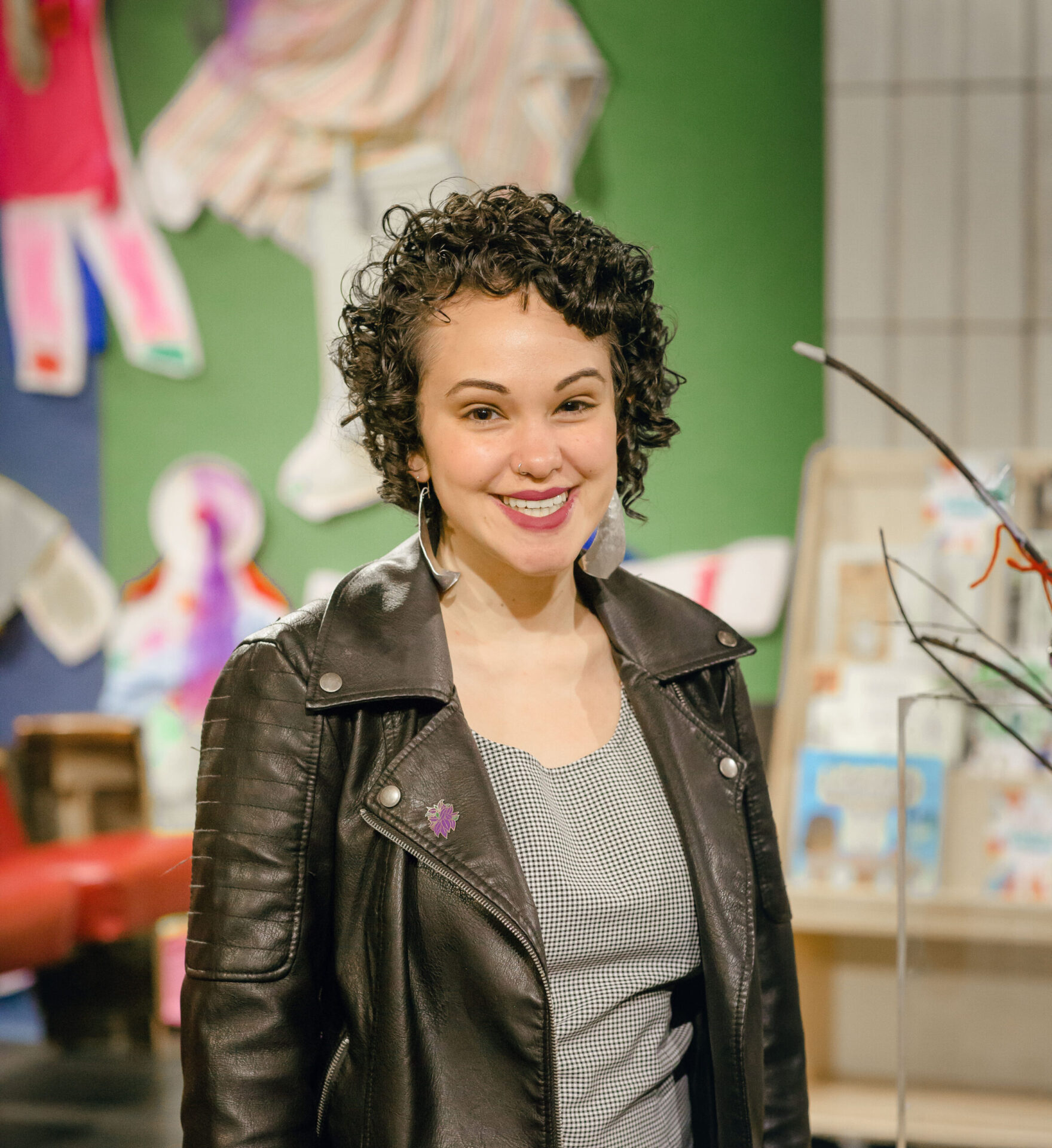Accompanied by the sounds of the Saturday Light Brigade broadcast, members of the public were invited on the afternoon of May 11th to view and engage with the Youth Media Advocacy Project (YMAP) Public Showcase. On display at the showcase were projects completed by middle and high school students from four different Pittsburgh Public Schools, who learned by participating in YMAP how to create effective media campaigns to advocate for change in their schools and communities. Projects focused on a wide variety of issues, from extended recess time to the power of restorative justice practices, and incorporated high-quality media content meant to broadcast their messages across multiple platforms.
Since it was founded ten years ago, the Carlow University Center for Youth and Media Advocacy has brought YMAP to schools throughout the Pittsburgh area as a means of empowering students to identify issues in their communities and advocate for positive reform. YMAP’s program coordinator Jess Gold emphasized how “the program is all about centering youth voices and youth leadership,” while providing young learners with various tools and resources to help them achieve their goals.

“The youth know what’s going on in their schools,” Jess continued. “They know what needs to change, but school systems aren’t necessarily set up to give students that power.” YMAP helps put that power in students’ hands by providing them an opportunity to identify the issues they feel are most important, design high-quality media campaigns addressing those issues, and share their messages directly with stakeholders.
By helping bridge the gap between students, school administrators, and the wider community, YMAP “encourages students to feel like they have avenues to make real change.”
The program runs throughout the course of a school year, during which time the students must collaborate to complete every aspect of their projects.
Chanessa Schuler, Director of Programs at Saturday Light Brigade (SLB), explained how the process works: “We don’t go in with any agenda,” she said, echoing Jess’ comment about centering student voices. “We start out by having the kids brainstorm which issues are important to them. Then they have to come to a consensus, which can be difficult.” Part of the process is teaching students how to compromise and work together for the sake of a common goal. “And that’s what real life looks like! You don’t always get to do everything your way, so how can you use your gifts to contribute to the big picture?”
Through setting up meetings with administrators, making calls to various organizations, and gathering the resources they need to complete their projects, students build professional skills they might not learn in a traditional classroom. Incorporating different types of media into their campaigns also helps strengthen students’ grasp on the technical side of media creation, from audio recording to video editing and graphic design. By the end of the program, students have developed a unique set of skills that Chanessa “hope[s] they carry with them for the rest of their lives.”
The program culminates toward the end of the school year in an Idea Exchange Showcase, hosted on Carlow’s campus by the Center for Youth and Media Advocacy. This year’s Idea Exchange took place on Friday April 26th, and brought together over 100 students from four participating schools, who had a chance to learn about each other’s projects, share strategies for success, and network with adults working in the fields of youth empowerment, education reform, and media advocacy.
This was the first year Carlow and SLB decided to host a public showcase, in conjunction with Remake Learning Days. Sharissa, a student at Manchester Academic Charter School, was there to share some reflections on her YMAP project—an event she organized called Show Your Inner Beauty, which gave her peers the opportunity to discuss the importance of self-care and self-love. When asked to reflect on the role media played in her project, Sharissa mentioned how “social media makes people in my generation focus on how everyone else looks all the time. I wanted people to focus on how they looked and felt, and what made them feel beautiful.” In the process of organizing her project, Sharissa even managed to land a job opportunity with the local restaurant who helped cater her event.
Students at Perry High School focused on the need for teachers to have a better understanding of teen mental health, so that they can act as a support network for students struggling with mental health issues. The group plans on recording a radio broadcast at the SLB studios, dedicated to sharing students’ stories and concerns surrounding mental health awareness. Students at Brashear High School created a high quality video showcasing how their Youth Court works to promote restorative (rather than punitive) justice practices as a means of disrupting the school to prison pipeline.
No matter what issue each group chose to focus on, they all shared a common goal: improving the overall atmosphere of their schools and communities by uplifting one another, and using their collective voices to enact positive change.
